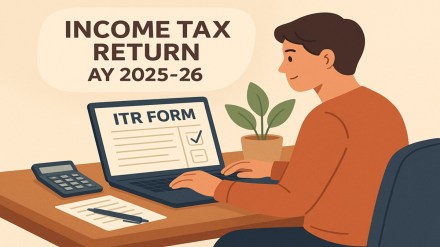Is it necessary to go to a chartered accountant (CA) every time to file your income tax return (ITR)? The answer is ‘No’. Suppose your source of income is limited to salary, savings bank interest, rent or some simple investments. In that case, you can easily file your ITR yourself without the help of any professional.
The government has made the process of filing income tax returns easier, digital and transparent than ever before. Taxpayers can easily file returns themselves through the e-filing portal (incometax.gov.in).
Also read: Income tax return processing and ITR refunds start for AY 2025-26: Here’s how to check status
How to file an ITR on your own?
Deepesh Chheda, Partner, Dhruva Advisors explains, “Yes, an individual can file their ITR independently without the involvement of a CA.”
The Income Tax Department now fills your form with pre-filled data, reducing the chances of error and speeding up the process. All you have to do is check it, edit it if needed and fill the rest of the information.
Chheda elaborates, “In recent years, the process has become even more seamless with pre-filled ITR forms that automatically populate key details such as salary income, tax deducted at source (TDS), interest income, and other financial information based on data already available with the tax department. This has reduced manual entry and minimised errors, making self-filing a viable option for many taxpayers.”
He feels that individuals with relatively straightforward income profiles such as income from salary, house property, or other sources, where data is simple and limited, can certainly file their returns independently.
However, in cases where the income sources are more complex such as business income, capital gains, or foreign assets, it is advisable to consult a CA to ensure full compliance with applicable tax laws and optimized tax planning, Chheda noted.
What documents are required to file ITR?
-PAN card and Aadhaar card (must be linked)
-Form 16 – for salaried people
-Form 26AS, AIS, TIS – these tell how much tax is deposited in your name and what financial activities are recorded
-Bank account details – for ITR refund
-Proof of tax saving investments – documents of PPF, ELSS, LIC, mutual funds, health insurance, donations etc.
-Home loan interest certificate, if you have taken a house loan
Also read: Income Tax Returns: Netizens flag login, technical errors as ITR filing begins after delay
Easy steps to file ITR yourself
-Login to incometax.gov.in
-Select “e-File > Income Tax Return > File Income Tax Return”
-Choose the assessment year (AY 2025-26), and select the online mode
-Choose the ITR form based on your income (like ITR-1 Sahaj)
-Now check the pre-filled information on the portal, add any additional income or deductions
-Check the tax calculation, if tax is payable Pay Self-assessment Tax
-Validate the form, check the declaration and submit
-Finally e-Verify the return – using Aadhaar OTP, net banking or other methods
Note: If you do not e-Verify, your filing will be considered incomplete.
ITR filing stats and highlights
Last date to file ITR for AY 2025-26: September 15, 2025
Note: This deadline is applicable to those taxpayers whose accounts are not liable to be audited.
New Change: If you are claiming tax deductions (like 80C, 80D), you need to provide valid proof and correct data, as the government is now making deductions more transparent.
Also read: New income tax rules 2025: Your ITR to face mandatory investigation in these 5 cases
Does everyone need a CA?
No. And that is the biggest change. Deepesh Chheda says, “With the government’s strong push towards digital integration and data pre-filling, the return filing process has become significantly more efficient and less dependent on professional intervention…”
But if you have complex income — such as capital gains from the stock market, business income, or foreign investments—it is wise to consult a tax expert or a chartered accountant.
ITR filing is no longer a technical scare. If you are salaried and have a simple financial profile, you can file ITR yourself without the help of a CA—just keep a few documents ready, and follow the right steps.
Self-filing ITR is now a digital skill and a money-saving tool. Take some time, understand the process—and be self-reliant this tax season.
